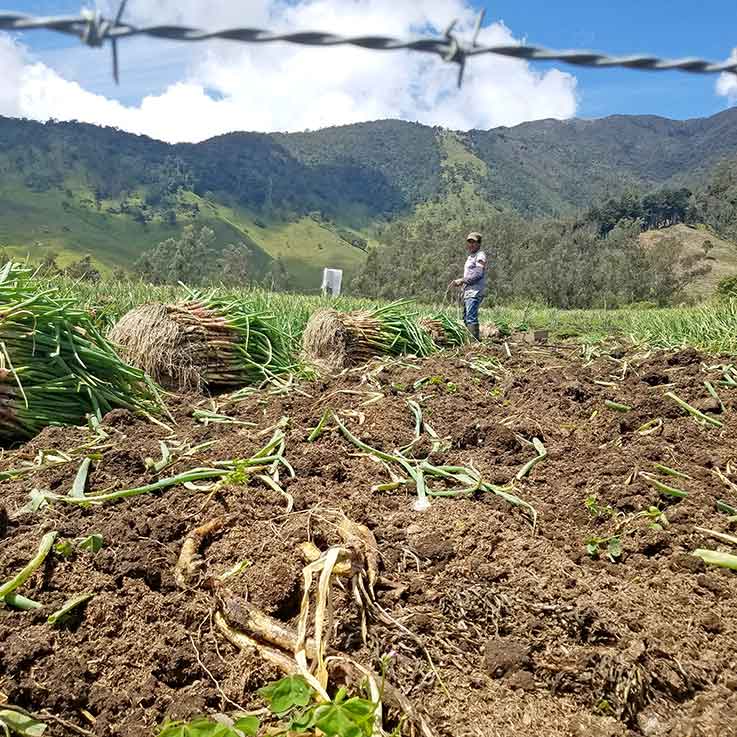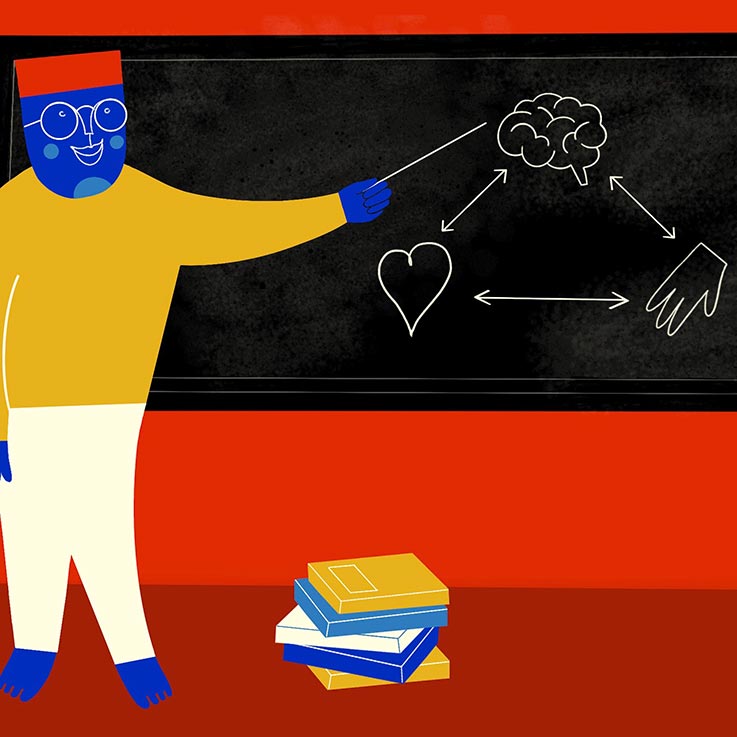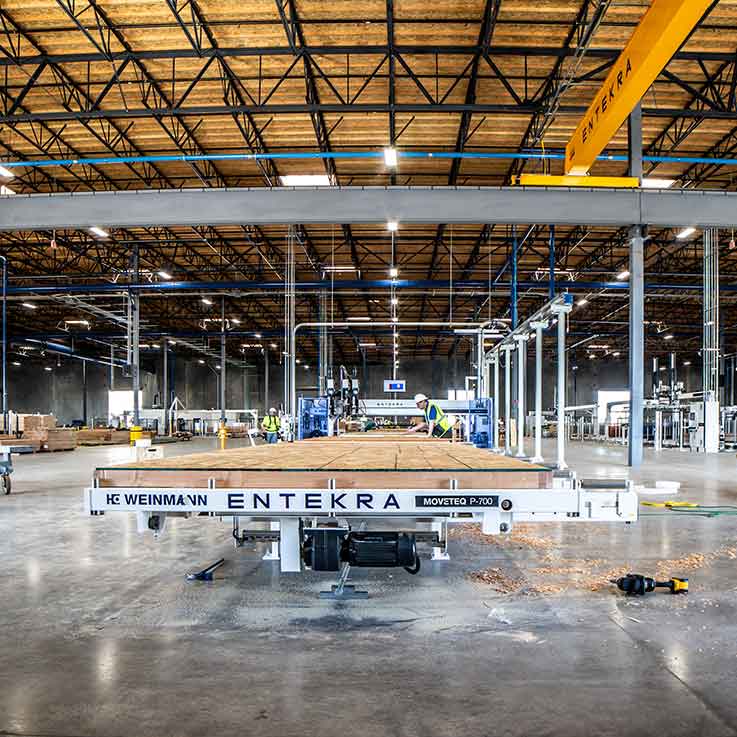
How European Governments Can Help Spur Innovations for the Public Good
How European Governments Can Help Spur Innovations for the Public Good
Sensible innovation policy design, targeted at innovations for the public good, can be a crucial tool in helping our societies recover and rebuild.
By Marieke Huysentruyt May 26, 2021
(Photo by iStock/FrankyDeMeyer)
In a world on fire, in the grips of a global health pandemic and social crisis, and at the brim of a steep economic downfall, we all agree on the need for innovation, to help us rebound, recover, and rebuild. Not just for-profit innovation that comes from dedicated research labs, however: we need the kind of innovation that reconciles economic value creation with social value creation and that comes to light through spontaneous, voluntary, often uncoordinated joint search by individuals, groups, or organizations. We need the employees who think up an app that empowers their peers to access the right level of mental health support at (tele)work; we need the industry experts who search for and set new international standards; we need the coop members who search for new farm practices in the fight against crop disease; and we need the community associations that search for new ways to improve access to essential health information and health care services to the poor.
However, there is much less clarity about what governmental actions are needed to bring it about. What can governments do to accelerate the development and propagation of innovations for the public good?
European Perspectives on the Emerging Social EconomyAcademics and scholar practitioners explore how the social economy could transform Europe and the rest of the world.FOLLOW THIS SERIES
For a start, traditional innovation policy levers—like policies on intellectual property, increasing the supply of human capital focused on innovation, and supporting research and development—will need to be tweaked. To spur innovations for the public good, it is important that ideas not be fenced-off; for this reason, we need policy that renders ideas more accessible, especially dormant ideas, so that they can be integrated into innovations for the public good. We need an increase in more than just the number of individuals trained in science, technology, engineering, and mathematics (commonly known as STEM); we also need an increase in the number of individuals who genuinely care about others’ well-being and who are willing to voluntarily contribute to the search for innovations for the public good. And we need favourable policies for more than just traditional R&D expenses; we need policies facilitating investments to coordinate concrete approaches to addressing pressing societal challenges.
The stakes are high. In many OECD countries, inequality is at its highest levels in decades, and people are taking to the streets to express their discontent and demand change (in some cases at great personal risk). Only governments—with their uniquely broad scope of functions and mandates—can spur innovations for the public good in so many different domains simultaneously. Ideally, governments will step up and act collectively. After all, so many of today’s most pressing societal problems are global problems, beyond the scope of any single nation.
We Need a New Kind of Legal Framework to Activate and Transform Dormant Knowledge Into Innovations for the Public Good
Tremendous untapped potential lies dormant in knowledge and technology currently being used only for commercial purposes, but which could be put to significant social use. Consider the example of a cooling system currently being developed by Colruyt Group, a large Belgian retail group, to keep produce cool for up to three days without consuming electricity: such a technology could be applied elsewhere to great effect. For example, to help African farmers transport their milk or distribute vaccines over long (unelectrified) distances. Colruyt Group is therefore always looking for cases to implement their technology, so that it does not become dormant knowledge.
To facilitate this activation of dormant knowledges like these, we need a legal framework encouraging the development of “social impact licenses.” This would allow, for example, a technology holder to grant time-bounded permission to bring an intellectual property, a technology, a product, or a service to a predefined market for societal value creation at preferred rates or reduced costs. Another important step would be for EU governments to mandate that recipients of their innovation grants be required to give others access to their research, so it can be leveraged for practical, social purposes. Putting these sorts of measures in place would not only influence the next generation of researchers but could encourage businesses (who hold a great deal of intellectual property) to think more ambitiously about the positive societal impact that they can make.
We Need Better Information to Activate People to Search for the Public Good
Most of us lack a clear understanding of the societal problems at hand or have flawed mental models of pressing societal issues. Complexity and ambiguity tend to put people off, so governments must provide citizens with better and more reliable information about today’s most pressing societal challenges and solutions. The circular economy, greenhouse effects, the ecological transition, the global refugee problem, for example, can be difficult to grasp, and for this reason, access to non-partisan information is all the more important.
Sharing information about feasible solutions (as well as about solutions that have been tested and abandoned) can hugely accelerate discovery, as demonstrated by the joint efforts to develop a COVID-19 vaccine, shared across many labs. And just as they have played a key role in the development of the Internet and aviation technologies, governments can and should play a major role in building the technological and data infrastructure for sharing information about what works and what doesn’t. Again, because the problems are global, coordinating efforts across national boundaries could help reduce the costs and increase the benefits of such knowledge infrastructure.
Another essential tool in governments’ toolbox is fostering the development of other-regarding preferences: the more people care about others’ well-being, the more willing they are to contribute to search for the public good. For example, in a recent large-scale experiment in Germany, second-grade children were matched with mentors—potential prosocial role models—who spent one afternoon per week in one-to-one interactions with the children, doing things like visiting a zoo, museum, or playground, cooking, ice-skating, or simply having a conversation. After two years, the kids who had been assigned to mentors revealed a significant and persistent increase in prosociality, as captured through choice experiments and survey measures. Evaluations of this large-scale experiment suggest that prosociality is malleable, and that early childhood interventions of this type have the potential to systematically affect character formation, with possible long-term benefits.
We Need to Enable the Formation and Sustainability of Meta-Organizations Committed to Innovating for the Public Good
To address complex social problems, we cannot rely on one single, isolated approach. We need multiple and diverse—yet concerted—approaches. In other words, we need meta-organizations: collectives of autonomous organizations or individuals that are not bound by authority but share a system-level goal.
Promising examples of meta-organizations have emerged across the globe in various sectors, such as the Harlem Children’s Zone in education or the vaccine alliance Gavi. To accelerate the formation of meta-organizations like these, governments must help organizations adopt a “complex systems” framing, and (since different organizations in a meta-organization often abide to different institutional logics) must help with translation and coordination: welcoming substantive norm changing, facilitating role definition, and advising on how decision-making can be equitably shared. Finally, to help ensure that these meta-organizations exist over time, it is essential that organizations share measurement results; here, again, governments can play a decisive role by producing reporting guidelines and financially supporting the backbone organizations that help ensure consistent and open communication across member organizations.
We Need to Leverage Social Economy Organizations
While these strategies may sound new to governments, they resonate with the competencies and expertise of Europe’s social economy organizations (associations, cooperatives foundations, mutual organizations, and social enterprises). Governments would therefore be well-advised to leverage the critical resources of social economy organizations.
For example, in a working paper authored with Ute Stephan, we found that in the context of an open sustainability innovation challenge, social entrepreneurs came up with more creative ideas (and more ideas that anticipate behavioural challenges) than commercial entrepreneurs or firm employees. Many social economy organizations spend tremendous effort in building a trusting relationship with their target beneficiaries, which allows them to be acutely attuned to beneficiaries’ evolving social needs. Such insights are essential to narrowing down the object of a social impact license agreement.
When it comes to encouraging citizens to search for the public good, the use of monetary incentives can backfire, while reliance on intrinsic motivation alone can contribute to mental health problems, burnouts, etc. However, social economy organizations have accumulated a great deal of experience on striking a balance between extrinsic and intrinsic rewards. And since social economy organizations have experimented extensively with framing social issues (in the context of fundraising campaigns) to create “communities of practice,” they are well-placed to advise governments on how to design effective information campaigns and information-sharing infrastructure. Many social economy organizations are experienced with community building and engagement, which are critical skills for forming meta-organizations, and because of their deep social domain expertise, they can be legitimate candidates to step up and fulfil the role of backbone organization. Finally, many hold important expertise on how to sustain hybridity over time.
In sum, social economy organizations have at least four distinct roles to help encourage the development and implementation of innovations for the public good.
- They can act as expert and host, helping design incentives to innovate for the public good and effective information sharing technologies.
- They can act as catalysts, helping to spread and amplify prosocial preferences, values, and attitudes.
- They can act as a creative engine, helping to recognize innovations for the public good and ways for how existing technologies can be leveraged toward social impact domains.
- They can act as credible brokers, helping to hold meta-organizations accountable and set ambitions high.
As Europe is currently defining its Action Plan for Social Economy, I hope the ideas and strategies put forth here can spark the debate and find their way into the next roadmap. Without claiming that innovation policy targeting innovation for the public good is the only solution to today’s climate, economic, social and health crises, sensible innovation policy design targeted at innovations for the public good will be a key part of the solution. Social economy organizations are not the only actor with an important role to play, but they are essential and can give Europe a head start.










